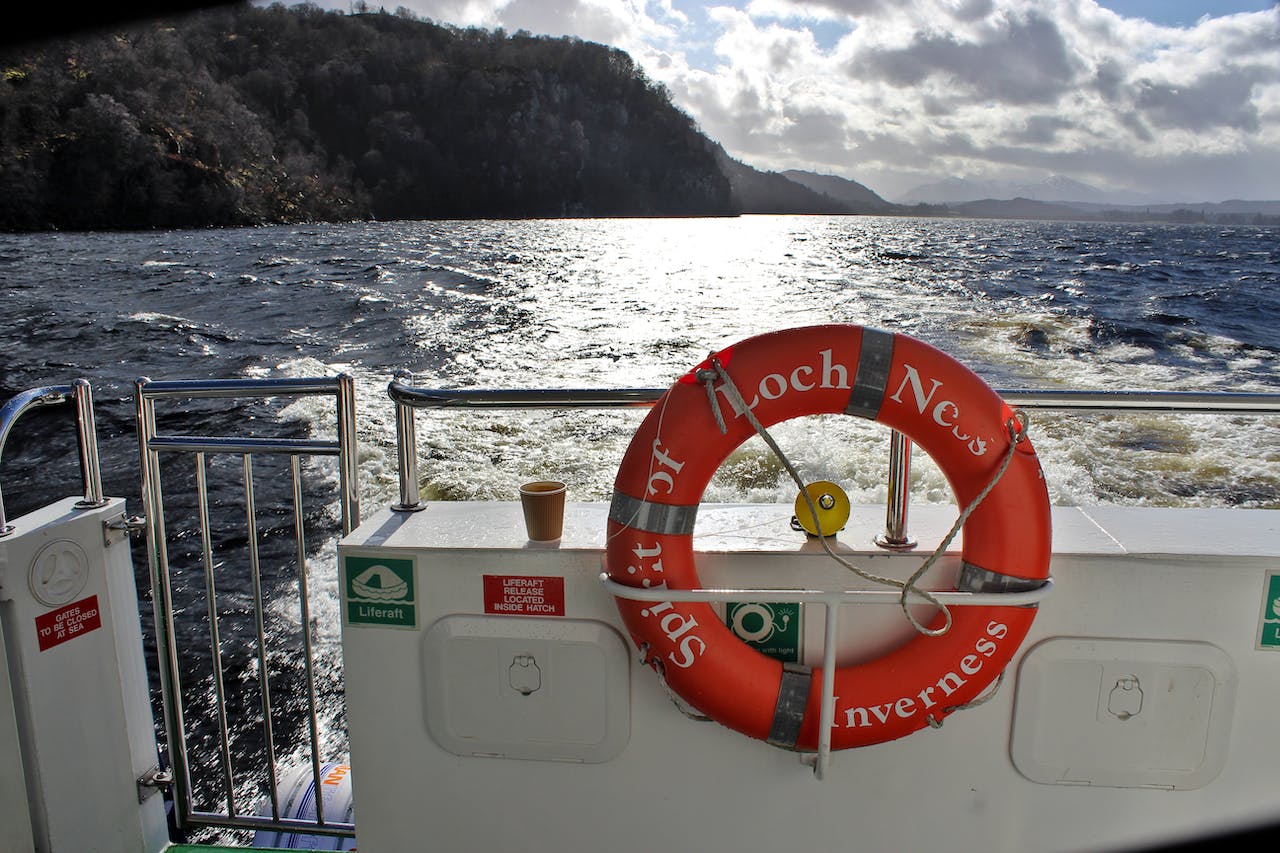The Secret of Loch Ness
Happy Weird Wednesday! Today we’re having a picnic by what is arguably the most famous lake in Cryptozoology (the study of animals rumored to exist, without definite proof). But on this blog, we’re not here for proof—we want plots. And there are quite a few story ideas swimming around in Loch Ness! So have a seat on the blanket, and we’ll get started.
“Nessie” is the nickname for something that’s been reported in Loch Ness for hundreds of years. The most famous image of her is the “Surgeon’s Photo,” below/right, which has been revealed as a hoax. [For lots of great old Nessie photos, see this collection by Tony Harmsworth.] Early sightings described “beasts” looking like whales or dragons, while later reports claimed many-humped sea serpents or plesiosaurs. And lest you think she’s entirely aquatic, there are a few land sightings of Nessie as well.
Of course, for every Nessie theory or sighting, there is a scientific refutation, the simplest being that a large animal in a populated area is almost impossible to miss, particularly if it has to come to the surface to breathe air. And the fact that there have been sightings over hundreds of years implies a population of creatures, but there have been no bodies or juveniles found.
But as a myth, Nessie is very much alive, and beloved. So let’s get into some monstrous writing prompts!
- She’s not from around here. So there is a counter to the fact that we don’t find baby Nessies, or an impact on the food chain by Bigfoot, or the bodies of other cryptids: perhaps these animals don’t actually live here. There could be a portal to another dimension or world where large populations of these animals live, and only occasionally do they stray to our planet. You could have a plot where these portals occur by accident, or someone could create them as a way to save an endangered species: perhaps Nessies are nearly extinct on their home world and aliens are testing Loch Ness as a potential breeding area. (Side note: this reminds me of my very favorite explanation as to why there are no clear pictures of Bigfoot—perhaps the photos are fine, and the guy just is blurry.)
- Secret tunnel! One explanation for lake monsters is that they are single animals out of a larger population from a better hiding place: the ocean. Maybe the lake has an underwater tunnel to the sea, or used to, until a rock slide cut off access, leaving one poor Nessie marooned in the Loch (where luckily she could survive in freshwater). You could have a great monster plot if it turns out the one they find is a baby—and the ones back home are WAY bigger. With more teeth. Related to this idea is the theory that a small population of now-extinct animals like plesiosaurs got stuck in a lake millions of years ago (though Loch Ness is not that old, unfortunately), and they’ve survived and/or evolved into something else while the main population died out. In cryptozoology, these are called “relic” populations. Perhaps the Nessies got smaller and that’s why they can hide. Of course, small can still be deadly, especially if the creatures are venomous. Or you could have a plesiosaur arrive in Loch Ness via time travel.
- The Long (Necked) Con. A hoax can make for a great plot. Common tropes include “I tried to make a hoax of this animal but it turned out to be real and now it wants to eat me;” “I swear this photo someone showed me is a hoax/absolutely real but I can’t prove it and it’s becoming my obsession;” and “I made what I thought was an obvious fake but everybody believed me and now it’s gotten way out of hand” or its converse “I took a real photo but everybody thinks it’s a hoax.” There are lots of reasons people perpetrate hoaxes. A less common plotline might involve someone being forced (or paid) to create a believable hoax by somebody with bad intentions. Or powerful beings (aliens? gods?) might create hoaxes as practical jokes on humans—or each other.
- Be careful what you wish for. Say there’s no Nessie. But somebody really wants there to be. It could be a kid making a wish on a star or a scientist cooking up monsters in their lab. Maybe one of the hoax photos somehow comes to life, or a necromancer reanimates an extinct creature. Would Nessie’s creator want to hide or share her? How would the world react to an actual Loch Ness Monster?
- Meet the neighbors. The theories all have one thing in common: Nessie is an animal. But what if she weren’t? Or at least, what if she were an animal on the level of humans: an advanced species with equal (or superior) intelligence and the technology to live undetected in Loch Ness? Finding Nessie would be less of a hunt for a living fossil and more of a first contact situation. There’s an opportunity for serious world (or loch) building here: what is their society like? Their tech? Where do they come from? How long have they been there? And why do they hide?
Thanks for spending your Weird Wednesday here! Remember, if you see something in the loch—take a photo!
Want to chat about the blog? Did you use one of the prompts? Hit me up on social media.
If you like cryptids, you can check out Dark Cheer: Cryptids Emerging, Volume Blue, which contains my story The Enfield Monster: A human woman and her swamp monster wife adapt to the changes old age brings to their lifelong relationship.
Sign up for my free monthly newsletter and never miss a blog post! Or subscribe by RSS


